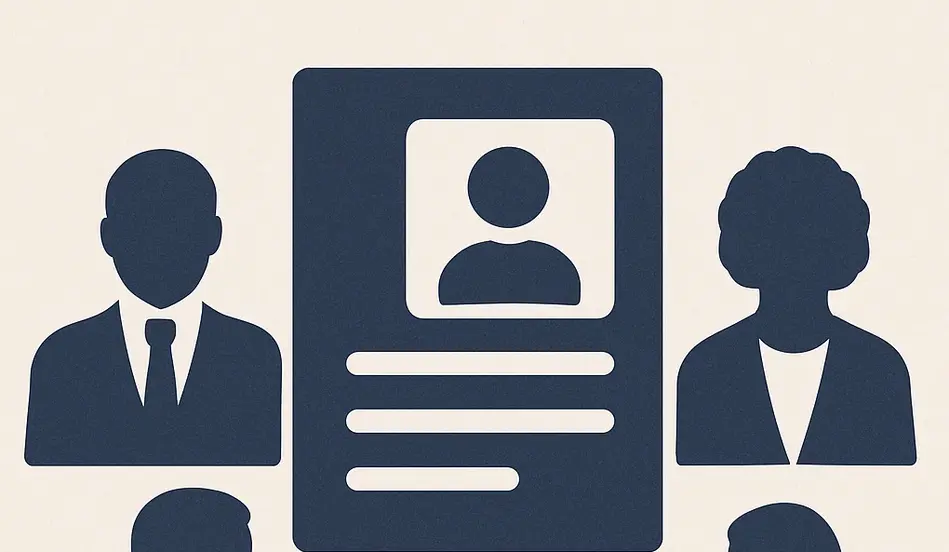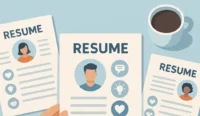Introduction
Your resume is more than just a document—it’s your personal marketing brochure, a door-opener to interviews, and the first impression you make on hiring managers. In today’s competitive job market, you need more than a list of responsibilities; you need a compelling narrative that demonstrates your skills, achievements, and professional brand. This 2,000-word guide offers actionable resume writing tips to help you stand out, get past Applicant Tracking Systems (ATS), and secure more interviews.
Understand Your Audience
Before you type a single word, identify who will read your resume:
- ATS systems. Recruiters use software that scans for keywords.
- Hiring managers. They scan quickly for fit, impact, and clarity.
- Peers or cross-functional stakeholders. In some industries, colleagues may review before advancing candidates.
Tip: Keep your formatting simple—standard fonts (Arial, Calibri), clear headings (Work Experience, Education, Skills), and no text boxes or graphics that ATS might skip.
Tailor for the Role
Generic resumes get generic results. Instead:
- Analyze the job description. Highlight must-have skills, unique qualifications, and industry-specific terms.
- Mirror language. If the posting says “data-driven marketing strategist,” use that exact phrase.
- Prioritize relevant achievements. Reorder bullets under each role so the most closely aligned accomplishments appear first.
Example:
Before:
- Managed social media channels
- Increased Facebook engagement by 30%
After (for a “Digital Engagement Manager” role):
- Boosted Facebook page engagement by 30% through targeted ad campaigns and audience segmentation
- Oversaw strategy and content for three social media platforms
Craft a Powerful Summary or Headline
Many recruiters spend less than six seconds per resume. A concise, impactful summary helps them immediately see your fit.
- Headline (1 line): “Senior UX Designer Driving 25% Increase in User Retention”
- Professional summary (2–3 lines): Focus on your top strengths, years of experience, and signature achievements.
Formula:
[Your Role] with [X years] of experience in [industry/skill], recognized for [top achievement], skilled at [core competency].
Quantify Achievements, Don’t Just List Duties
Numbers transform vague statements into compelling proof points. Instead of “Led sales team,” say:
- “Led a team of 8 sales reps to achieve a 20% YoY revenue growth, adding $500K in new business.”
Where to add metrics:
- Revenue or cost savings (dollars)
- Percentage improvements (efficiency, engagement, retention)
- Volume or scale (number of users served, team size managed)
- Timeframes (quarterly, annually)
Optimize for Applicant Tracking Systems (ATS)
ATS parsing errors can leave your resume unseen. Ensure yours gets read:
- Use standard headings. “Work Experience,” not “My Journey.”
- Avoid headers/footers. ATS may not read them.
- Embed keywords organically. Scatter important terms in bullet points and skills section.
- Save as .docx or PDF (when allowed). Check the job posting for format preference.

Structure with Clarity and Consistency
A clean layout helps both machines and humans:
- Reverse-chronological order. Latest roles first.
- Uniform formatting. Same date format (e.g., “Jan 2020 – Present”), bullet style, and font sizes.
- Whitespace. Let your file breathe—margins of 0.5–1 inch and 1.15–1.5 line spacing aid readability.
Showcase Transferable & Soft Skills
Technical prowess matters—but so do soft skills. Instead of listing “Excellent communicator,” illustrate it:
- “Facilitated weekly cross-functional meetings with 12 stakeholders to align on product roadmap, reducing time-to-market by 15%.”
Common transferable skills:
- Leadership
- Project management
- Communication
- Critical thinking
- Adaptability
Include a Dedicated Skills Section
Make it easy for ATS and hiring managers to find your competencies:
- Technical skills. Software, languages, platforms (e.g., Python, Salesforce, Google Analytics).
- Certifications. PMP, Scrum Master, Cisco Certified Network Associate.
- Languages. Fluent Spanish, basic Mandarin.
Tip: Group similar tools together (e.g., “Analytics: Google Analytics, Tableau, Power BI”).
Leverage Keywords Strategically
Beyond ATS needs, keywords signal expertise to hiring managers. Use a two-step approach:
- Extract keywords from multiple job postings for your target role.
- Weave them into your summary, bullets, and skills list—only where they truthfully apply.
Highlight Professional Development
Ongoing learning sets you apart. Include:
- Formal education. Degrees, institutions, graduation dates.
- Certifications & courses. Coursera, LinkedIn Learning, industry workshops.
- Conferences & speaking engagements. “Speaker at SaaS Growth Summit 2024 on customer retention tactics.”
Add a Projects or Portfolio Section (if Applicable)
For roles requiring demonstrable work (design, engineering, writing):
- Project name & timeframe.
- Your role & technologies used.
- Key outcomes or links. GitHub repos, published articles, design mockups.
Example:
E-Commerce Website Redesign (Mar 2023 – Jun 2023)
- Spearheaded UX overhaul using Figma and React, leading to a 35% lift in conversion rate
- Collaborated with backend team to integrate Stripe API for seamless checkout
Use Strong Action Verbs
Bullets should start with verbs that convey ownership and impact:
Led, Developed, Spearheaded, Optimized, Analyzed, Orchestrated, Streamlined, Negotiated, Championed, Scaled
Avoid weak starters like “Responsible for” or “Worked on.”
Keep It Concise & Relevant
- Length: 1 page for <10 years’ experience; 2 pages if more extensive.
- Bullets per role: 3–6 focused statements.
- Irrelevant details: Remove outdated software (e.g., “Microsoft Word” in 2025) or unrelated part-time gigs.
Proofread Meticulously
Typos undermine professionalism:
- Spell-check & grammar tools. Grammarly, Word’s review.
- Read aloud. You’ll catch awkward phrasing.
- Peer review. A fresh pair of eyes spots missing commas or inconsistencies.
Infuse Personal Branding Elements
Stand out from cookie-cutter resumes:
- Profile photo (only in regions/industries where it’s acceptable). A professional headshot can humanize your application.
- Personal tagline. “Customer-Centric Product Manager” beneath your name.
- Color accent. A subtle accent color for headings—used sparingly and sparingly, and always check if PDF retains it.
Add Volunteer Work & Interests (Judiciously)
If space allows and it aligns with company culture:
- Volunteer roles. “Board Member, Local Animal Shelter—raised $15K through fundraising event.”
- Interests. “Trail running, marathon training”—show work-life balance and discipline.
Final Formatting Checklist
- Font: 10–12 pt. (11 pt. is standard)
- Margins: ≥0.5”
- Line spacing: 1.15–1.5
- File name: “FirstName_LastName_Resume.pdf”
- Hyperlinks: Shortened URLs; remove link underlines if possible
Conclusion
An effective resume marries clarity, relevance, and quantifiable impact. By tailoring each section to the job, optimizing for ATS, and showcasing your unique achievements and brand, you transform a static document into a dynamic career catalyst. Remember: your resume evolves as you grow—update it regularly, test it against job descriptions, and seek feedback from mentors.
Frequently Asked Questions
How long should my resume be?
One page is ideal for under 10 years of experience; two pages are acceptable if you have extensive senior-level roles or technical projects.
Should I include an objective statement?
Objectives are generally outdated. Instead, lead with a concise professional summary or headline that highlights what you bring to the employer.
How do I handle employment gaps?
Be transparent—use headings like “Career Pause” or “Sabbatical,” spotlight any freelance or volunteer work during that time, and emphasize skills you developed.
4. What file format should I use?
Use .docx if explicitly requested; otherwise PDF is safest—just double-check that the employer’s ATS supports it.






